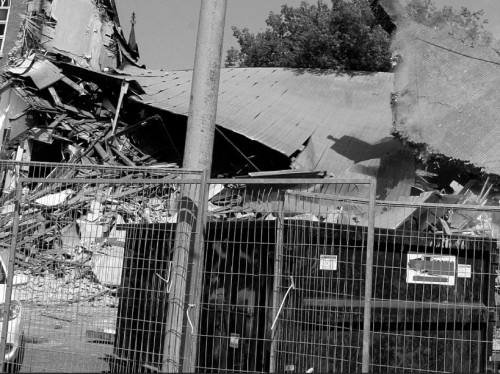County News
Myths and misconceptions

Meeting to shed light on preserving County’s architectural heritage
The destruction of the red brick church in Picton this past summer aroused a heightened interest in the distinct heritage of Prince Edward County—specifically the buildings, architecture and streetscape that defines our view of this community.
Many expressed a mix of outrage, confusion and mourning as a contractor smashed a hole in the wall of the 135- year-old Main Street icon. The anger morphed into frustration aimed at the municipality, council and the County’s Heritage Advisory Committee.
The controversy revealed a wide gap in understanding of what can be to done protect and preserve heritage assets owned by private individuals and companies.
The Prince Edward Heritage Advisory Committee (PEHAC) is hosting an information night next week to try and narrow this gap.
“The purpose is to build awareness of the built heritage and the value of it in the County,” said Marc Seguin, chair of PEHAC. “We hope to shed some light on property designation— just what is the process, who’s responsible as well as some perspective from people who do this on a regular basis.”
One of these perspectives belongs to Marcus Letourneau, Kingston’s full-time heritage planner.
Letourneau’s job is to consider, assess, advise, write and speak about Kingston’s built heritage. He deals with the issues of heritage every day.
One of the ways Kingston has managed to preserve its historical heritage has been by designating areas or neighbourhoods as “heritage conservation districts”—bestowing special status upon all the buildings in a specific area.
Seguin believes this approach may find some support in the County as a means to avoid the gradual chipping away of architecturally distinct blocks or streetscapes.
Part of the challenge in protecting heritage is balancing the rights of the public with private property holders. Stephen Ashton has been thinking about this for years. Ashton is a planner with a private practice in Cobourg advising clients about building projects in and around his community. His firm is located in a building that has been designated as historically significant.
He understands the issues of preserving heritage from both sides—the public’s desire to maintain history and the private owners’ need to manage costs and retain the ability to sell at some point. Ashton will bring this perspective to the meeting next Wednesday.
The meeting is set for Wed. night, Dec. 15, at the Picton Town Hall from 6:30 to 8 p.m. There will be an opportunity for questions after the presentations.
“I’m hoping to see our new councillors and a packed house,” said Seguin.



Look to the UK. We lived in a Grade 2 listed farm house that dated back to the Jacobian times. In the UK listed buildings are loved by their owners for the sense of history. You do not just own the building but are a custodian. The listed building law in the UK could easily be transposed over here. It depends if people really do want to preserve history or just say they do.